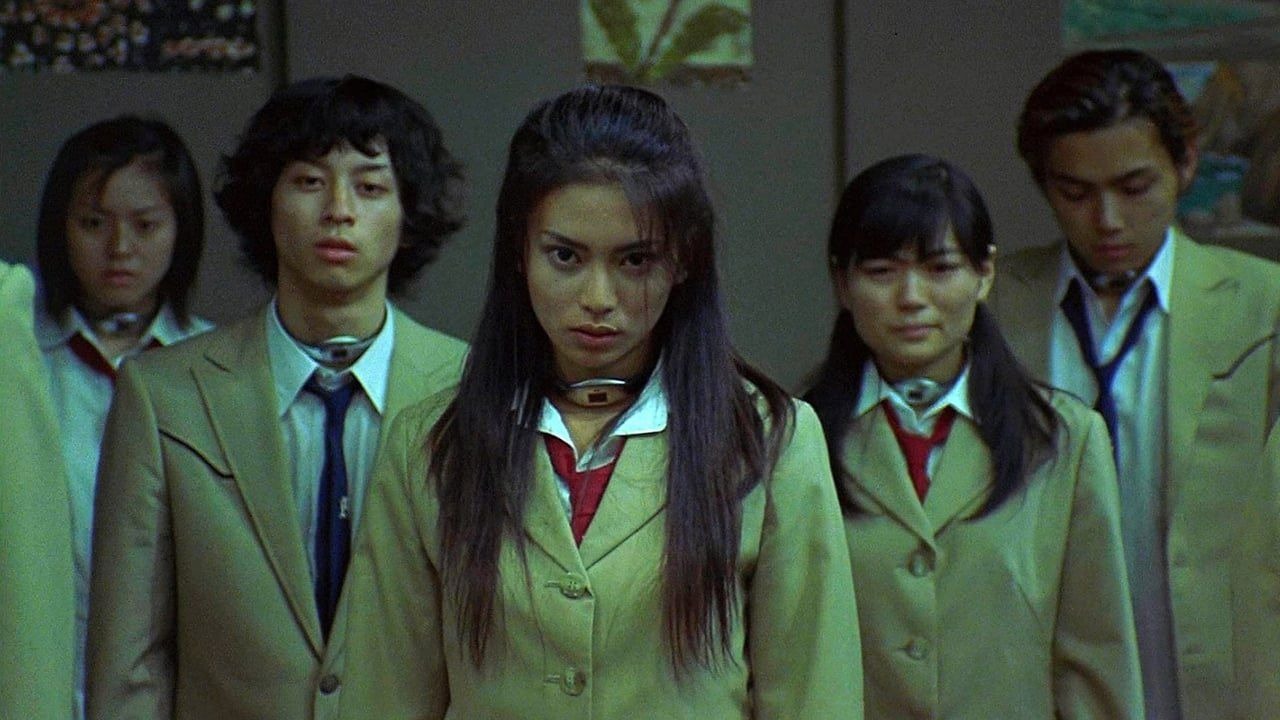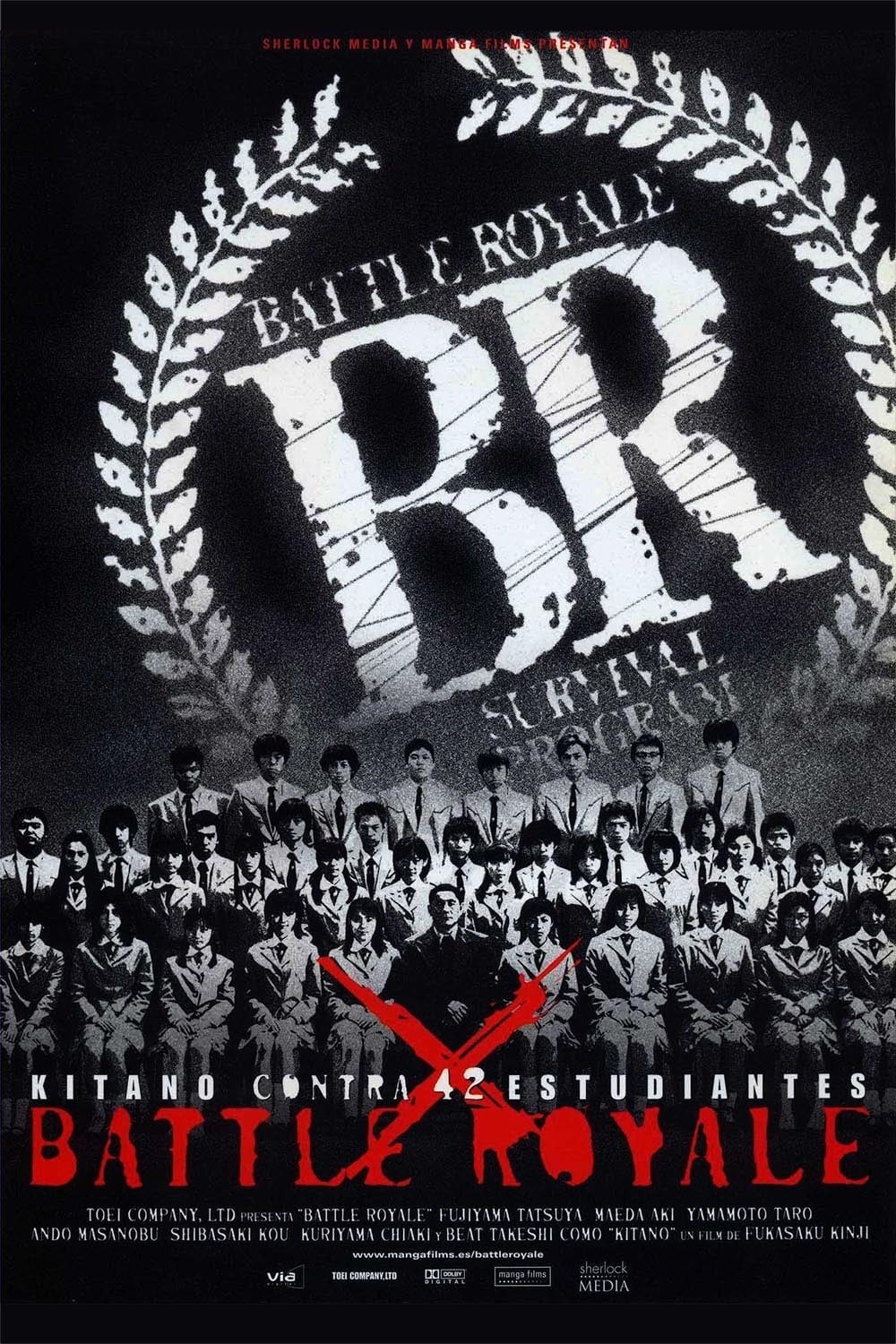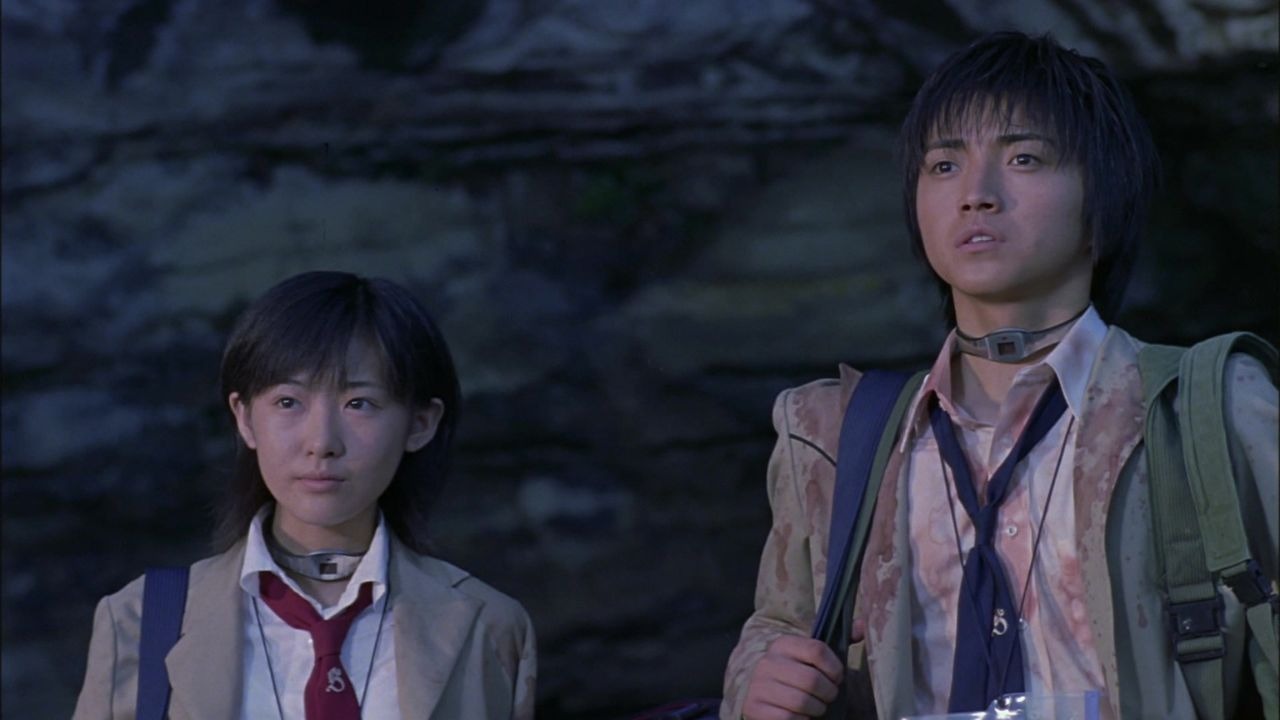A battle royale is characterized by a scenario where individuals are confined in a designated space and must fight until only one remains alive. This concept was popularized by Koushun Takami’s 1999 novel, which led to a film adaptation released in 2000.
The term took on a broader cultural interpretation, shifting from its original meaning to signify a lethal competition among participants until only one survivor emerges.

Kinji Fukasaku’s Controversial Direction
Directed by Kinji Fukasaku, known for his work in The Yakuza Papers, the film Battle Royale faced substantial political backlash upon its release in Japan. This controversy hindered its international screening, limiting its exposure to select film festivals.
However, after a decade, the film was eventually released in the West, resulting in a surge in popularity and a dedicated global fanbase. Quentin Tarantino praised Battle Royale as the finest film since his career began in 1992.
Synopsis of Battle Royale (2000)
Set in a dystopian future, Japan is ruled by a totalitarian regime in the repercussion of a severe economic downturn that left the unemployment rate at 15%. With juvenile crime on the rise, the government implemented the BR Act, which randomly selects delinquent students to compete in a brutal battle royale on a deserted island, where only one participant can emerge victorious.
The narrative centers on Shuya Nanahara, a ninth-grade student traumatized by his father’s suicide on his first day of middle school. Kitano, their middle school teacher, resigns after being injured in a knife attack by Yoshitoki Kuninobu, Shuya’s close friend. Noriko, a classmate of Shuya and Nobu, secretly keeps the butterfly knife used by Nobu to injure Kitano.
On a field trip one year after Kitano’s resignation, Shuya’s class is gassed and wakes up in a facility surrounded by Japanese Self-Defense Force soldiers. Kitano informs them they have been selected for the Battle Royale, where only one can survive.
They are forced to comply due to explosive collars that monitor their movements and conversations. Nobu is killed by Kitano after panicking and admitting he won’t comply with the rules.
The Fight for Survival
As tensions escalate, classmates must choose between killing or becoming victims themselves. Two transfer students, Kawada and Kiriyama, also join the competition. The film depicts a harrowing descent into violence as friendships crumble under the pressure of survival.
Kiriyama emerges as a ruthless killer, while Kawada presents a more enigmatic figure, possessing skills that allow him to survive while showing a hint of compassion. Shuya, who refuses to kill, focuses on protecting Noriko, who was loved by Nobu.
As the body count rises, Shuya and Noriko find temporary safety with Kawada. He warns them against trusting anyone on the island but appears to betray them by seemingly killing both to ensure his victory.
However, Kitano grows impatient as he monitors the situation through their collar microphones and eventually sends the JSDF soldiers away while waiting for Kawada.
Kawada returns with Shuya and Noriko, revealing his deception and that he had disabled their collars. Kitano, revealing a painting that depicts Noriko as the last survivor, expresses a twisted fondness for her, stemming from her kindness when no one else showed him respect.
In a moment of desperation, he demands Noriko kill him, but Shuya shoots him after realizing the gun is merely a toy. On a boat, the trio escapes the island, but Kawada succumbs to his injuries.
Upon reaching the mainland, Shuya and Noriko become fugitives, charged with murder by the government. In the final scene, Noriko hands Shuya Nobu’s butterfly knife as they make their way to Shibuya Station, disguised and on the run.
Shogo Kawada: The Survivor’s Story
Shogo Kawada, portrayed by actor and politician Taro Yamamoto, is one of the transfer students who enters the battle royale with Shuya’s class. His survival strategy involves only killing in self-defense or against those who pose a threat.
Kawada claims to possess knowledge of various survival skills, including medicine and cooking, and he is adept at hacking computer systems. Despite his impressive abilities, he remains an ambiguous character whose true skills are shrouded in mystery.
He shares with Shuya and Noriko that he previously participated in a battle royale three years prior, emerging victorious. Kawada recounts a tragic story of love for a girl named Keiko, whom he lost after their friend turned on them in a moment of panic.
The emotional weight of her death drives Kawada’s actions as he seeks to understand the importance of Keiko’s dying smile. His return to the game serves to raise the stakes further, as he is determined to seek vengeance against the system that took her life.
Analysis of the Movie’s Conclusion
In the film’s climax, Shuya and Noriko survive due to Kawada’s determination to protect them, as he sees reflections of his lost love and himself in their bond. Shuya’s commitment to honoring his friend’s memory manifests in his efforts to shield Noriko, while she embodies kindness even in the face of adversity.
Their actions, rooted in compassion, finally lead to their status as fugitives from a government that sees their survival as a threat to the established order. The continuation of their story reveals in the sequel, Battle Royale II: Requiem.

The epilogues serve to enrich the narrative by providing depth to the characters and their motivations. They underscore the importance of kindness in times of crisis, suggesting that empathy may be a protective force in moments of chaos.
This compassion not only aids in surviving the present but serves as a foundation for future resilience, emphasizing the necessity of fostering a kinder world for the sake of collective survival.
The Epilogues: A Deeper Look
The first epilogue explores the backstory of Mitsuko, a classmate who descends into violence during the battle. It portrays a young Mitsuko returning home to find an intruder attempting to assault her mother.
In an act of desperation, she pushes him down the stairs, leading to his death. The narrative then turns to a basketball game, where the lively atmosphere contrasts with Mitsuko’s isolation and anxiety.
In the second epilogue, Shuya sits alone on an empty basketball court. A ball rolls away, and Nobu appears to comfort him, assuring him that everything will be okay.
The third epilogue depicts a serene moment by a riverbank between Noriko and Kitano, who share a frozen treat. This scene takes place after Kitano’s resignation, revealing a rare moment of warmth as Noriko acknowledges that she still possesses the knife that Nobu used against Kitano. Kitano’s response is ambiguous, reflecting the challenges of their relationship.
Kitano’s Role in the Story
Kitano, portrayed by Takeshi Kitano, serves as the middle school teacher who faces bullying from his students. He is depicted as monotonous in his teaching style and socially awkward.
After being injured by Kuninobu, Kitano resigns from his position. Two years later, he reappears as the overseer of Shuya’s class during the Battle Royale. Consumed by anger and indifference, he kills two students for misbehavior even before the game commences. His relationship with his daughter is strained, hinting at his feelings of being unloved.
Kitano symbolizes the angry adult figure whose hostility stems from the cruelty he endured from youth. He occupies one end of a generational divide, with a serious chasm separating him from the students, which has widened due to an expectation of blind obedience from the younger generation. The older generation, meanwhile, remains distant and unapproachable, failing to bridge this gap.
When Kitano asks Noriko, “In this moment, what should an adult say to a kid?” upon learning about the knife, it reveals a fundamental conflict. Noriko’s revelation of possessing the weapon represents one of the rare instances of kindness he has experienced. However, the nature of their exchange is fraught with danger, highlighting the complex dynamics at play in their relationship.



